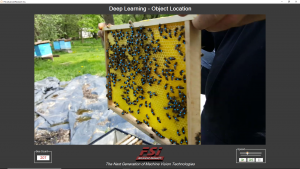There is no denying that deep learning is one of the hottest buzzwords in industry. But what exactly is it? More specifically for our purposes, how can it be applied to machine vision?
Deep learning allows us to perform machine vision tasks that have been incredibly difficult (if not impossible) with standard rule-based vision. In short, deep learning is excellent at tasks humans are good at.
The three basic functions at which deep learning excels are:
LOCATION
Like humans, deep learning can find and locate the position of complex objects in a cluttered visual field.
Unlike traditional rule-based vision, it is not as critical to have consistent lighting and positioning when using deep learning. Even when the aspect of an image changes, deep learning is able to locate the objects.
This ability to locate objects is well suited for applications like counting and bin-picking, and is ideal for identifying parts to be inspected.
CLASSIFICATION
Deep learning is exceptionally well-suited for applications requiring image or object classification.
Objects can be correctly classified by deep learning even if they exhibit differences in size, shape, and color.
Classification is useful in sorting and stacking applications as well as distinguishing between defect types.
ANALYSIS (DEFECT DETECTION)
The most powerful function of deep learning is its ability to detect anomalies or defects.
Through training, deep learning can inspect parts of different shapes, sizes, and types, identifying part defects while ignoring (non-critical) part differences.
The ability to perform analysis makes deep learning the ideal solution for surface inspection applications.
IN SUMMARY
Remember that the functions of location, classification, and analysis are tasks that humans are naturally good at but have been very difficult to perform with traditional rule-based machine vision. Oftentimes in deep learning, these three functions are performed in conjunction to solve a problem. For example, the program may first locate a part in a complex image, then analyze the surface of the part, classifying the types of defects into their respective categories.
Deep learning is not perfect, though it is possible to achieve quality scores of 99.9% (compared to roughly 80% for humans). And oftentimes deep learning alone is not the full answer. However, by combining the expertise of deep learning (location, classification, analysis) with the capabilities of standard rule-based machine vision, we can achieve far more with our vision inspections than previously possible!






